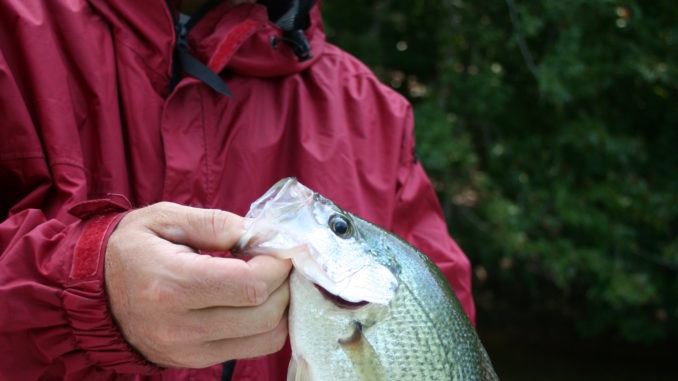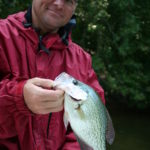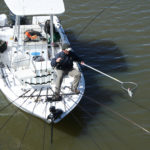
Start around creek mouths and move back as month progresses
While Lake Murray is not known for producing big numbers of crappie in March, it is the month when you will catch some of the biggest slabs of the year, according to guide Brad Taylor.
“March is definitely a big-fish month for Lake Murray crappie; fish from 1¾ pounds to 2 pounds are not uncommon at all,” said Taylor, whose best Lake Murray slab weighed 3.2 pounds and was caught in March. “And you can catch them throughout the month just about any way you want.”
The main thing to know, he said, is that fish are setting up to spawn, and the spawn usually begins from the middle to the end of the month.
“Tops spots are the Big and Little Saluda rivers. The fish can be found all along the river channel at the mouths of the creeks in early March,” said Taylor (803-331-1354). “Crappie are structure-oriented fish, but at this time, structure is not necessarily important. The fish will be relating to the creek channels.”
Crappie will be found in all depths, he said, primarily depending on the weather and time of day. On colder days, fish will push out into the mouths of the creeks at the river channel. As the day warms, fish will move into the warmer water back in the bays. Taylor said the river channel is about 20 feet deep, and as fish move more towards the creeks, the depth will be around 12 to 13 feet.
“You will want to pay attention to your sonar,” he said. “If you set all your rods from shallow down to where you are marking fish, you will determine what depth they are biting.”
Taylor said the two most popular techniques of crappie fishing this time of year are spider-rigging and trolling.
“Most of the guys who are spider-rigging fish jigheads tipped with a small minnow. The trolling guys typically fish curlytail jigs, and a lot of them will tip the jig with a small minnow,” he said. “The spider-rigging guys will normally fish eight to 10 rods, with each rod set at a different depth until they figure out which depth the fish are feeding at.”
Taylor uses a ¼-ounce to ¾-ounce weight, depending on depth and speed, crimping the weight on about 16 inches above the jighead.
“You usually get better bites on the lighter weight,” he said. “Adjust your depth by the distance of line you put out and your speed to where you are bumping the bottom.
According to Taylor, traditional brush-pile fishing can also be productive, but only at certain times.
“The fish are focused on spawning, and they are moving constantly, so there is not a real brush pattern on a constant basis,” he said. “In the morning, the fish may be on brush in 18 feet of water, and by noon they may be on brush in 7 or 8 feet of water. So you just have to go and check brush and be open minded.”
The other thing to remember is that at some point, the fish will actually start spawning. At that point, Taylor said, you can fish minnows or jigs under a cork around the banks near shallow brush and catch fish.
“March is a really up-and-down month because of the weather patterns,” Taylor said. “If the fish are feeding and you find them, you will really do well, but if you don’t, you will hardly catch anything.”



Be the first to comment